
 18791940 Paul Klees philosophy of art is perhaps best summed up by his statement: A drawing is simply a line going for a walk. From a very young age, Paul Klee was a talented musician, but as he grew older he realized that his true vocation lay with art. Despite this passion, it took him years of frustrating experimentation to discover his artistic voice and the development and fruition of his exceptional eye as a color theorist of unparalleled skill. In later years, he communicated some of his understanding to upcoming artists when he taught at the influential German Bauhaus academy in Weimar, and later in Dessau, after the academy moved in 1925. Klees interest, understanding, and analysis of color theory and tonewhich he explained in several influential books has arguably left a greater legacy than his artworks. As one of the great avant garde artists of the early 20th century, Klee was swept along with the changing moods and philosophies of the time.
18791940 Paul Klees philosophy of art is perhaps best summed up by his statement: A drawing is simply a line going for a walk. From a very young age, Paul Klee was a talented musician, but as he grew older he realized that his true vocation lay with art. Despite this passion, it took him years of frustrating experimentation to discover his artistic voice and the development and fruition of his exceptional eye as a color theorist of unparalleled skill. In later years, he communicated some of his understanding to upcoming artists when he taught at the influential German Bauhaus academy in Weimar, and later in Dessau, after the academy moved in 1925. Klees interest, understanding, and analysis of color theory and tonewhich he explained in several influential books has arguably left a greater legacy than his artworks. As one of the great avant garde artists of the early 20th century, Klee was swept along with the changing moods and philosophies of the time.
He was open to new ideas and artistic insights and experiments, welcoming inspiration from other artists, both alive and dead. This was a revolutionary time in art as unconventional artists tarted to explore color, technique, and sheer abstraction. The Post- Impressionists (Picasso, Braque, van Gogh, and Czanne) led the way, to be rapidly followed by Cubists, Fauvists, German Expressionists, and many more. These movements completely revolutionized the concept of what was acceptable as artin the face of antagonism from many traditionalists.  My Room (German: Meine Bude), 1896 Paul Klee crested this wave of innovation, and experimented with many of the new approaches and techniques as he explored the various ways of producing art. For Klee, the process of making art was every bit as important as the finished item.
My Room (German: Meine Bude), 1896 Paul Klee crested this wave of innovation, and experimented with many of the new approaches and techniques as he explored the various ways of producing art. For Klee, the process of making art was every bit as important as the finished item.
He wrote in one of his many notebooks: The act of giving form determines form itself and the process is more important than the form.  Paul Klee, 1911 Klee was inspired by the works of other artists, freely acknowledging his reverence for Michelangelo, as well as his near contemporaries: Czanne, van Gogh, Picasso, Matisse, Rousseau, and Kandinsky. He was also influenced by the early modernist theories surrounding Surrealism as well as Dada and Cubisminfluences he took and submerged into his own creative concepts. His philosophical approach was based on Einsteins theory of relativity. This fascinated and intrigued Klee who attempted to incorporate some of these world-changing ideas into his own work. Klee did not readily fit into a particular artistic category.
Paul Klee, 1911 Klee was inspired by the works of other artists, freely acknowledging his reverence for Michelangelo, as well as his near contemporaries: Czanne, van Gogh, Picasso, Matisse, Rousseau, and Kandinsky. He was also influenced by the early modernist theories surrounding Surrealism as well as Dada and Cubisminfluences he took and submerged into his own creative concepts. His philosophical approach was based on Einsteins theory of relativity. This fascinated and intrigued Klee who attempted to incorporate some of these world-changing ideas into his own work. Klee did not readily fit into a particular artistic category.
He used many styles and techniques, always exploring the different variations each media opened up to him. When he worked, Klee channeled his mood through the process of using areas of color that he then outlined or added figures to embellish. Some of his paintings are simply color and shade studies, juxtaposing light and tone to produce a thing of lyrical beauty. He said, Color is the irrational element in painting and chief vehicle of expression. He wanted to present his works as disciplined simplicity in order to portray seeing the world through child-like eyes. When his work was criticized as little more than the scribbles of a child, he claimed to be delighted.
By extension, he also revered the work of so-called primitive artists who perceived the world around them and re-created that world with a pure vision. Klees works are of an abstract or a representational nature and are created from a variety of mediain addition to oil, also watercolor, gouache, and tempera. Furthermore, his painting was often embellished by etchings and engravings. An important element in his work is the use of symbols and words to convey thoughts and philosophies directly on the canvas. These often humorous additions show his gentle wit and satirical eye. Klee liked to think of his works as visual poetry that could be read and enjoyed for their meaning but could also be hung on the wall.
He said, In art it is not seeing that is so important, but making visible. To provide even greater diversification, Klee habitually used a variety of surfaces on which to paint, not just conventional canvas, but linen or even fine gauze, and sometimes coarse burlap or board, glass, or any textured surface on which color could be applied. After finishing each work, he performed a ritual: a week after completing a painting he would hold a naming ceremony for it. A recurring image in his work is a cathe loved animalsbecause Klee believed they were the essence of sensuality. In the corners and around the edges of his work, a cat is often visible. Klee was especially attached to his own cat, Bimbo, and while traveling would write to his wife to anxiously inquire about him, rather than about his wife or his son! Klee could work with either hand, although he tended to write with his right hand, and draw and paint with his left.
As an unwitting gift to art historians, between 1897 and 1918 Klee kept a diary in which he explored his ideas and ruminations on art. The diary provides a valuable insight into his thought processes during the period: To emphasize only the beautiful seems to me to be like a mathematical system that only concerns itself with positive numbers. Paul Klee was born in the canton of Bern, Switzerland, on December 18, 1879, in the small village of Mnchenbuchsee bei Bern. His German father, Hans Klee, was a music teacher and the church organist, and although Paul was born in Switzerland he was given his fathers German citizenship. His Swiss mother, Ida Marie Frick, was a former professional singer who had abandoned her career when she married. They already had a three-year-old daughter, Mathilde, to whom Paul was very close all his life.
Klee recalled that he first started drawing when he was only three or four years old, encouraged by the colored chalks and paper supplied by his doting Swiss grandmother. Some of Klees early drawings survive and show him attempting to capture his surroundings. His grandmother also read him fairy stories and showed him religious iconography that inspired his early drawings. Even as a child he habitually took a sketch book with him when he went to visit his relatives around Switzerland, especially to his uncles rural restaurant where he was fascinated by the colors and swirls of the restaurants marble table tops. His parents, however, had other ambitions for Klee. They wanted him to follow in their footsteps and to become a professional musician.
Thus, he was taught the violin from an early age. He was clearly talented and played in his local youth orchestra during his teens. Music remained one of the great loves of his life, but he did not want to make a career of itmuch to the disappointment of both his parents. As a child, Klee attended the Progymnasium in the center of Bern and then the Literarschule. Despite his obvious intelligence, he was only an average scholar. The only subject he showed any aptitude for was Greek, a love he retained throughout his life.
He read Greek poetry until the day he died. Klee did not enjoy school and tried to leave early, but his parents insisted that he stay on another year. He only just managed to pass his exit exams in 1898. Although Klee still had strong parental pressure to pursue a musical career, he was already being called to his destiny of painter and artist. To further his artistic education, he had the choice of Paris or Munich, and he chose the latter. So, just two months after leaving school, Klee left home for Munich in southern Germany.
Next page
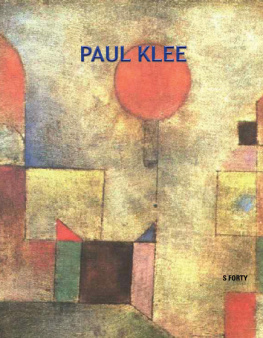
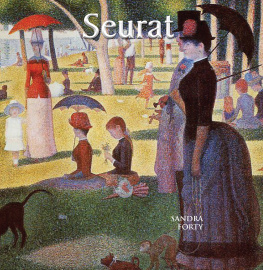
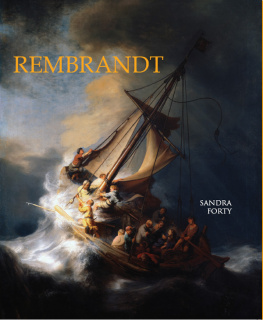
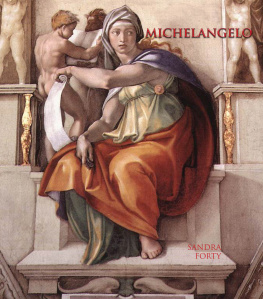
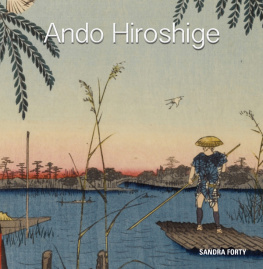

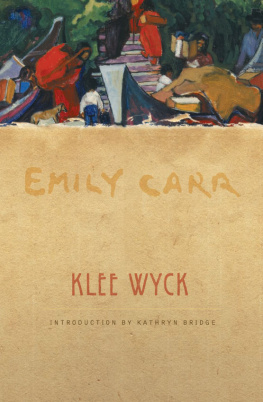
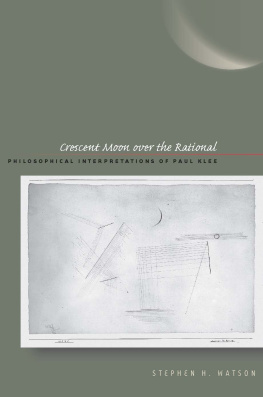
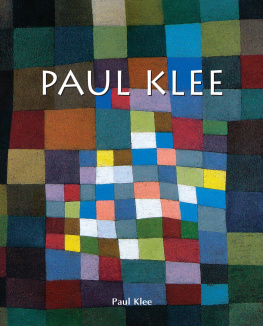
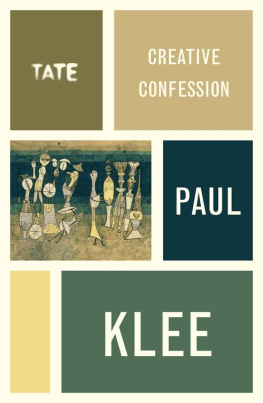
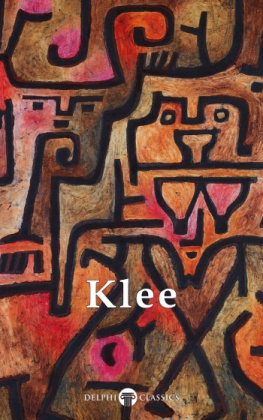
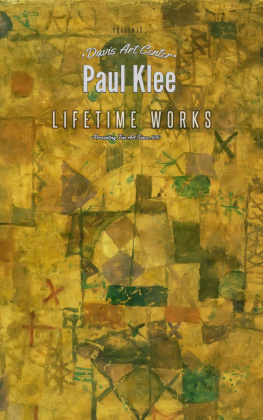
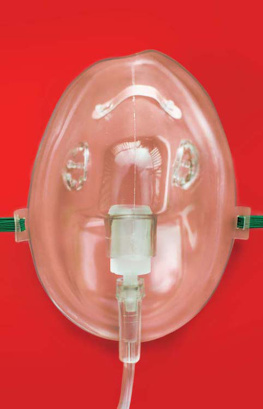
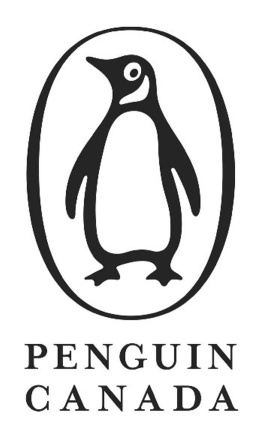

 18791940 Paul Klees philosophy of art is perhaps best summed up by his statement: A drawing is simply a line going for a walk. From a very young age, Paul Klee was a talented musician, but as he grew older he realized that his true vocation lay with art. Despite this passion, it took him years of frustrating experimentation to discover his artistic voice and the development and fruition of his exceptional eye as a color theorist of unparalleled skill. In later years, he communicated some of his understanding to upcoming artists when he taught at the influential German Bauhaus academy in Weimar, and later in Dessau, after the academy moved in 1925. Klees interest, understanding, and analysis of color theory and tonewhich he explained in several influential books has arguably left a greater legacy than his artworks. As one of the great avant garde artists of the early 20th century, Klee was swept along with the changing moods and philosophies of the time.
18791940 Paul Klees philosophy of art is perhaps best summed up by his statement: A drawing is simply a line going for a walk. From a very young age, Paul Klee was a talented musician, but as he grew older he realized that his true vocation lay with art. Despite this passion, it took him years of frustrating experimentation to discover his artistic voice and the development and fruition of his exceptional eye as a color theorist of unparalleled skill. In later years, he communicated some of his understanding to upcoming artists when he taught at the influential German Bauhaus academy in Weimar, and later in Dessau, after the academy moved in 1925. Klees interest, understanding, and analysis of color theory and tonewhich he explained in several influential books has arguably left a greater legacy than his artworks. As one of the great avant garde artists of the early 20th century, Klee was swept along with the changing moods and philosophies of the time. My Room (German: Meine Bude), 1896 Paul Klee crested this wave of innovation, and experimented with many of the new approaches and techniques as he explored the various ways of producing art. For Klee, the process of making art was every bit as important as the finished item.
My Room (German: Meine Bude), 1896 Paul Klee crested this wave of innovation, and experimented with many of the new approaches and techniques as he explored the various ways of producing art. For Klee, the process of making art was every bit as important as the finished item. Paul Klee, 1911 Klee was inspired by the works of other artists, freely acknowledging his reverence for Michelangelo, as well as his near contemporaries: Czanne, van Gogh, Picasso, Matisse, Rousseau, and Kandinsky. He was also influenced by the early modernist theories surrounding Surrealism as well as Dada and Cubisminfluences he took and submerged into his own creative concepts. His philosophical approach was based on Einsteins theory of relativity. This fascinated and intrigued Klee who attempted to incorporate some of these world-changing ideas into his own work. Klee did not readily fit into a particular artistic category.
Paul Klee, 1911 Klee was inspired by the works of other artists, freely acknowledging his reverence for Michelangelo, as well as his near contemporaries: Czanne, van Gogh, Picasso, Matisse, Rousseau, and Kandinsky. He was also influenced by the early modernist theories surrounding Surrealism as well as Dada and Cubisminfluences he took and submerged into his own creative concepts. His philosophical approach was based on Einsteins theory of relativity. This fascinated and intrigued Klee who attempted to incorporate some of these world-changing ideas into his own work. Klee did not readily fit into a particular artistic category.